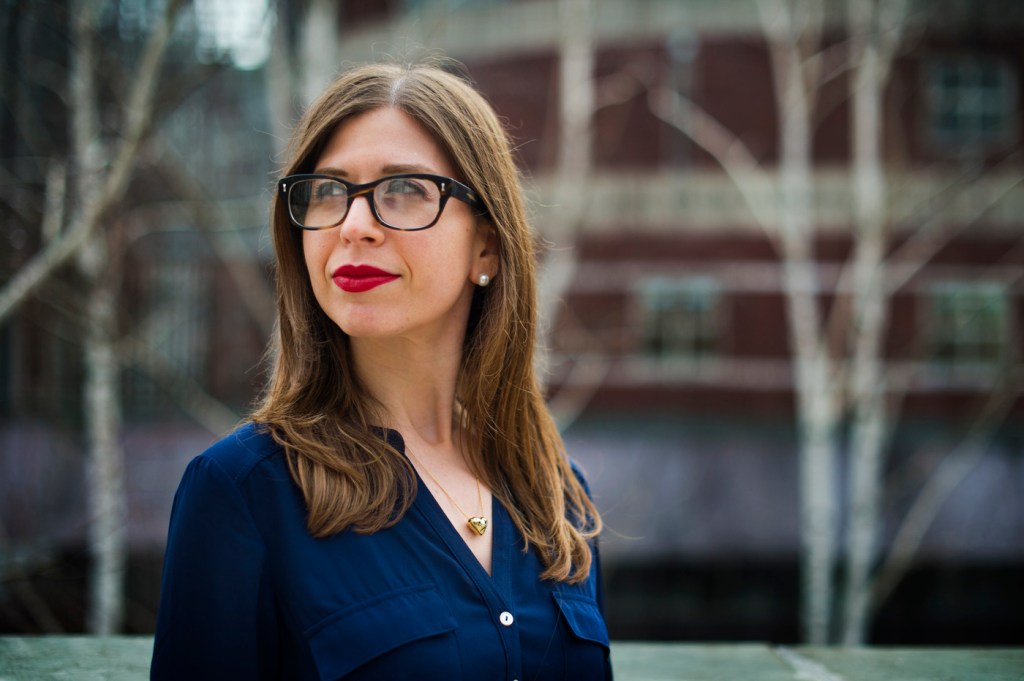The power of ‘voice,’ and empowering the voiceless

Many people use their voices everyday—to talk to people, to communicate their needs and wants—but the idea of ‘voice’ goes much deeper. Having a voice gives an individual agency and power, and a way to express his or her beliefs. But what happens when that voice is expressed differently from the norm? What happens when that voice is in some way silenced?

Meryl Alper, assistant professor of communication studies at Northeastern, explored this idea of “voice” in children and young teenagers who used an iPad app that converted symbols to audible words to help them communicate.
While it may seem like the app helped to return voice to those who used it, Alper found that the technology was subject to economic structures and defined through the lens of ableism.
“People with disabilities are not passively given voices by the able-bodied; disabled individuals, rather, are actively taking and making them,” she said.
Her book on the subject, Giving Voice: Mobile Communication, Disability, and Inequality, was recently recognized by the Association of American Publishers’ PROSE Awards, which honor “the very best in professional and scholarly publishing.”
We often hear about technology giving voice to the voiceless. What does ‘voice’ represent in your research? And what sorts of ‘voices’ are left out of technological advances?
“Giving voice to the voiceless” regularly signifies that the historically underrepresented, disadvantaged, or vulnerable gain opportunities to organize, increase visibility, and express themselves by leveraging the strengths of information, media, and communication technologies. A long list of tools and platforms—including the internet, Facebook, Twitter, community radio, and free and open software—have all been said to “give voice.”
In the book, I critically reflect on how “giving voice to the voiceless” becomes a powerful, and potentially harmful, trope in our society that masks structural inequalities. I do this by considering the separate meanings of “giving,” “voice,” and “the voiceless.” The notion of “the voiceless” suggests a static and clearly defined group. Discussions about “giving” them voice can reinforce and naturalize not “having” a voice, without also questioning the complex dynamics between having and giving, as well as speaking and listening. Additionally, “giving voice” does not challenge the means and methods by which voice may have been obtained, taken, or even stolen in the first place, and how technology and technological infrastructure can and does uphold the status quo.
What were the biggest takeaways from your research?
I studied how non- and minimally-speaking youth with developmental disabilities impacting their speech used voice output communication technologies that take the form of mobile tablets and apps—think of the technology used by the late Stephen Hawking, but simplified on an iPad. The impact of these technologies on the lives of these children and their families was at once positive, negative, and sometimes of little impact at all. We are collectively responsible for how overly simplistic narratives about technology metaphorically and materially “giving voice” to those with disabilities circulate, particularly as social media platforms monetize and incentivize clicks and retweets of stories. These kinds of news and media portrayals are derided among many in the disability community as “inspiration porn.” In economically, politically, and socially uncertain times, certainty in technology as a fix, certainty in disability as something in need of fixing, and the relationship between these certain fixations is something to think very critically about.
We also need to stay vigilant about protecting disability rights and improving disability policy, as well as the policies that acutely impact people with disabilities, such as education, healthcare, and internet access. Having a voice in general, and the role of technology in exploiting that voice, must be understood in relation to other forms of exploitation. People with disabilities are not passively given voices by the able-bodied; individuals with disabilities, rather, are actively taking and making them. Considering all the ways in which our media ecology and political environment are rapidly changing, at stake in these matters is not only which voices get to speak, but who is thought to have agency to speak in the first place.
Giving Voice received an honorable mention from the PROSE Awards. What does this honor mean to you and for your work?
It is a great privilege for my book to be counted among the 2018 honorees and as one of two winners in the Media and Cultural Studies category, as hundreds of exceptional books were published in the discipline in 2017. Media, communication, and cultural studies is a wide and vibrant field, encompassing two different departments at Northeastern alone (communication studies, and media and screen studies). As an assistant professor, it is immensely rewarding and affirming for my work to be considered of a similar caliber to past category winners, including acclaimed senior scholars in my field.
The award also makes a clear statement about the future of the discipline. Giving Voice is broadly about what it means to have a voice in a technologized world and is based on qualitative research among children, families, and people with disabilities. Those populations, and their concerns, are more often than not treated as niche or specialty within the academy. Qualitative research is also regularly undervalued compared to quantitative research. The honor motivates me to keep following my instincts, centering marginalized groups in empirical and theoretical work on technology and society, and posing research questions that excite me.





